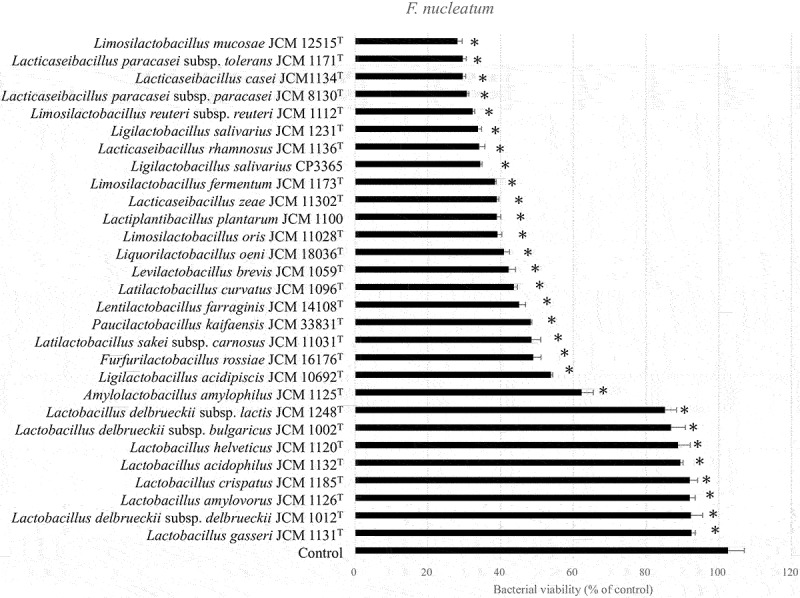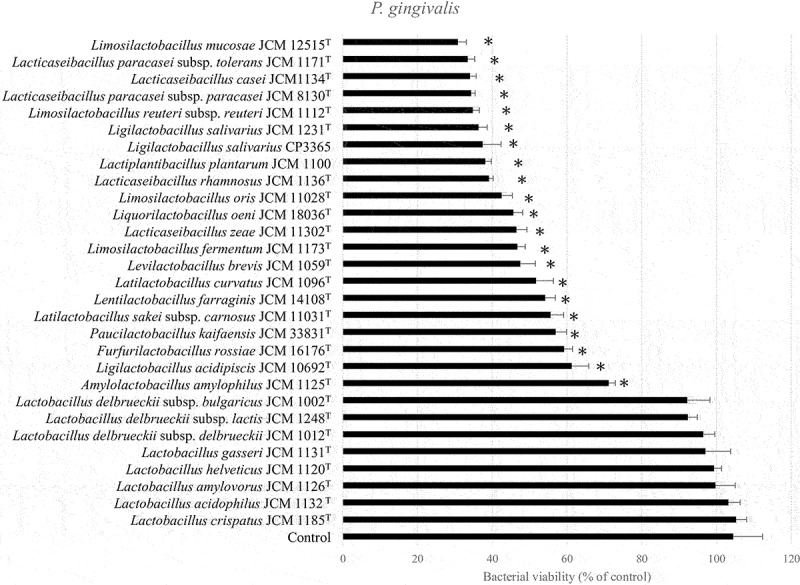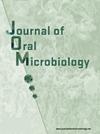基于对口腔细菌抑制活性的热杀灭乳酸菌筛选,以及口服热杀灭唾液乳酸杆菌CP3365对健康参与者牙周健康的影响:一项双盲、随机、安慰剂对照试验。
IF 3.7
2区 医学
Q2 MICROBIOLOGY
引用次数: 0
摘要
目的:本研究的目的是选择具有抗生素活性的热杀乳酸菌(HKL),并研究这种细菌在维持健康受试者牙周参数方面的功效。材料与方法:体外评价乳酸菌对牙龈卟啉单胞菌和核梭杆菌的抑菌效果。nucleatum。在一项随机、安慰剂对照试验中评估HKL给药对各种参数(斑块控制记录、探查时出血和探查袋深度)的影响。试验组和安慰剂组的参与者(n = 32)每天服用含有安慰剂或HKL的口服片剂,持续8周。采用16S rRNA基因群落谱分析方法对口腔超菌斑和唾液中的细菌进行鉴定。结论:HKL CP3365能有效抑制口腔细菌生长,对牙周健康有一定的保护作用。临床试验注册:[https://www.umin.ac.jp/ctr/index.htm],标识符[UMIN000045656]。本文章由计算机程序翻译,如有差异,请以英文原文为准。



Screening of heat-killed lactic acid bacteria based on inhibitory activity against oral bacteria and effects of oral administration of heat-killed Ligilactobacillus salivarius CP3365 on periodontal health in healthy participants: a double-blinded, randomized, placebo-controlled trial.
ABSTRACT Objectives The aims of this study were to select heat-killed lactic acid bacteria (HKL) with antibiotic activity and investigate the efficacy of this bacteria in maintaining periodontal parameters in healthy participants. Materials and methods An in vitro evaluation was conducted to assess the inhibitory efficacy of lactic acid bacteria against Porphyromonas gingivalis and Fusobacterium nucleatum subsp. nucleatum. The effects of HKL administration on various parameters (plaque control record, bleeding on probing, and probing pocket depth) were assessed in a randomized, placebo-controlled trial. Participants in the test and placebo groups (n = 32) consumed oral tablets containing placebo or HKL daily for 8 weeks. Oral bacteria in supra-plaque and saliva were identified using 16S rRNA gene community profiling analysis. Results Heat-killed Ligilactobacillus salivarius CP3365 significantly (p < 0.05) decreased the viability of oral bacteria and was selected for clinical trials. Administration of HKL CP3365 significantly (p < 0.05) inhibited increases in each parameter. No changes in the relative abundance of P. gingivalis or F. nucleatum subsp. nucleatum were detected by HKL CP3365, but the relative abundance of oral bacteria (genera Porphyromonas, Fusobacterium, and Haemophilus) was significantly (p < 0.05) decreased. Conclusion HKL CP3365 effectively inhibited oral bacteria growth and was useful for maintaining periodontal health. Clinical Trial Registration [https://www.umin.ac.jp/ctr/index.htm], identifier [UMIN000045656].
求助全文
通过发布文献求助,成功后即可免费获取论文全文。
去求助
来源期刊

Journal of Oral Microbiology
MICROBIOLOGY-
CiteScore
8.00
自引率
4.40%
发文量
52
审稿时长
12 weeks
期刊介绍:
As the first Open Access journal in its field, the Journal of Oral Microbiology aims to be an influential source of knowledge on the aetiological agents behind oral infectious diseases. The journal is an international forum for original research on all aspects of ''oral health''. Articles which seek to understand ''oral health'' through exploration of the pathogenesis, virulence, host-parasite interactions, and immunology of oral infections are of particular interest. However, the journal also welcomes work that addresses the global agenda of oral infectious diseases and articles that present new strategies for treatment and prevention or improvements to existing strategies.
Topics: ''oral health'', microbiome, genomics, host-pathogen interactions, oral infections, aetiologic agents, pathogenesis, molecular microbiology systemic diseases, ecology/environmental microbiology, treatment, diagnostics, epidemiology, basic oral microbiology, and taxonomy/systematics.
Article types: original articles, notes, review articles, mini-reviews and commentaries
 求助内容:
求助内容: 应助结果提醒方式:
应助结果提醒方式:


